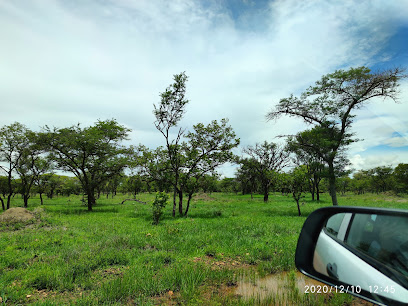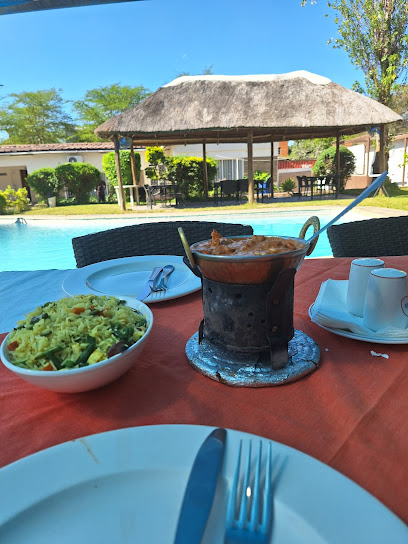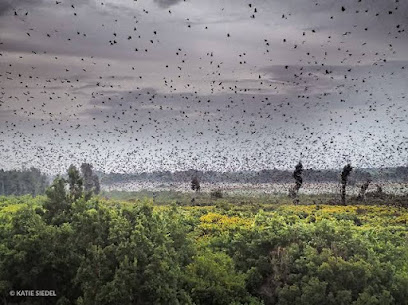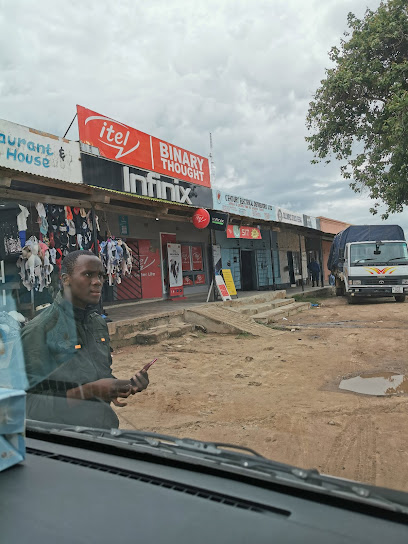
Kasanka National Park: Zambia's Hidden Gem of Nature
Discover Kasanka National Park in Zambia: A haven for wildlife, bird watchers, and nature lovers, renowned for its annual bat migration and diverse ecosystems.
Kasanka National Park is a hidden gem in Zambia, known for its remarkable biodiversity and stunning landscapes. Located in the Central Province, it spans roughly 390 square kilometers and offers a rich tapestry of habitats including miombo woodlands, swamp forests, and papyrus marshes. The park is particularly famous for its annual bat migration, one of the largest mammal migrations in the world, where millions of fruit bats fill the sky, creating a spectacular natural phenomenon. Nature enthusiasts will delight in the park's diverse wildlife. Kasanka is home to a variety of species including elephants, hippos, and sitatunga antelopes, which are often seen wading through the wetlands. Bird watchers will find paradise here, with over 450 bird species, making it one of the best birding spots in Zambia. The park also offers a range of activities such as guided safaris, canoeing on the Luwombwa River, and scenic hikes that provide breathtaking views of the park's lush scenery. For those seeking a tranquil escape, Kasanka provides a serene environment far from the hustle and bustle of city life. Accommodation options range from rustic campsites to comfortable lodges, allowing visitors to immerse themselves in nature while enjoying modern amenities. Whether you're an avid wildlife observer, a birding enthusiast, or simply looking for a peaceful retreat, Kasanka National Park offers a unique and unforgettable experience.
Local tips in Kasanka National Park
- Visit between October and December for the bat migration, a must-see spectacle.
- Pack binoculars and a bird guidebook to fully enjoy the park's rich birdlife.
- Book accommodation well in advance, especially during peak seasons.
- Consider hiring a local guide for a more informative and enriching experience.
- Wear neutral-colored clothing to blend in with the natural surroundings and avoid startling wildlife.
Kasanka National Park: Zambia's Hidden Gem of Nature
Kasanka National Park is a hidden gem in Zambia, known for its remarkable biodiversity and stunning landscapes. Located in the Central Province, it spans roughly 390 square kilometers and offers a rich tapestry of habitats including miombo woodlands, swamp forests, and papyrus marshes. The park is particularly famous for its annual bat migration, one of the largest mammal migrations in the world, where millions of fruit bats fill the sky, creating a spectacular natural phenomenon. Nature enthusiasts will delight in the park's diverse wildlife. Kasanka is home to a variety of species including elephants, hippos, and sitatunga antelopes, which are often seen wading through the wetlands. Bird watchers will find paradise here, with over 450 bird species, making it one of the best birding spots in Zambia. The park also offers a range of activities such as guided safaris, canoeing on the Luwombwa River, and scenic hikes that provide breathtaking views of the park's lush scenery. For those seeking a tranquil escape, Kasanka provides a serene environment far from the hustle and bustle of city life. Accommodation options range from rustic campsites to comfortable lodges, allowing visitors to immerse themselves in nature while enjoying modern amenities. Whether you're an avid wildlife observer, a birding enthusiast, or simply looking for a peaceful retreat, Kasanka National Park offers a unique and unforgettable experience.
When is the best time to go to Kasanka National Park?
Unmissable attractions to see
Lower Zambezi National Park
Uncover the wild heart of Zambia at Lower Zambezi National Park, where nature's beauty and adventure await every traveler.

Dag Hammarskjöld Crash Site Memorial
Explore the Dag Hammarskjöld Crash Site Memorial in Ndola - a poignant historical landmark honoring the legacy of the former UN Secretary-General.

Liuwa Plain National Park
Explore the majestic Liuwa Plain National Park, a hidden gem in Zambia with breathtaking wildlife and stunning landscapes, perfect for nature lovers and adventurers.

Lochinvar National Park
Explore the stunning landscapes and vibrant wildlife of Lochinvar National Park, a hidden paradise for nature lovers and adventure seekers in Zambia.

Blue Lagoon National Park
Experience the breathtaking beauty and tranquility of Blue Lagoon National Park, a serene escape for nature lovers and adventure seekers in Kapanda.

Kundalila Falls
Explore the captivating beauty of Kundalila Falls in Bikilionde, a serene nature preserve offering stunning views and peaceful retreats into nature.

Pontoon Campsite
Experience the tranquility of nature at Pontoon Campsite, your gateway to adventure in Zambia's stunning landscapes and wildlife.

Sioma Ngwezi National Park
Explore the breathtaking landscapes and rich biodiversity of Sioma Ngwezi National Park, Zambia's hidden gem for wildlife enthusiasts and adventurers alike.

Tayali Falls
Experience the serene beauty of Tayali Falls, a breathtaking natural wonder in Zambia's Teali region, perfect for relaxation and exploration.

Confluence
Explore the serene beauty of Confluence in Serenje, a captivating tourist attraction that merges stunning landscapes with tranquil wildlife experiences.

Kachengo Falls
Experience the breathtaking beauty of Kachengo Falls in Kasata, Zambia, where nature meets tranquility in a stunning natural park.

Melela Falls
Explore the hidden gem of Melela Falls in Kasata, Zambia, where cascading waterfalls meet lush landscapes for an unforgettable nature escape.

Namusuli Falls
Experience the breathtaking beauty of Namusuli Falls in Luchembi, Zambia, a serene park perfect for nature lovers and adventure seekers alike.

Mawase Hills
Explore Mawase Hills: A captivating hiking destination in Pensulo, Zambia, offering breathtaking views and diverse trails for nature lovers.

Senior Chief milambo
Explore the cultural richness of Senior Chief Milambo in Milenge, a must-visit tourist attraction for a deeper understanding of Zambia's heritage.

Essential places to dine
3 Trees Cafe
Discover culinary delights at 3 Trees Cafe in Lusaka - where local flavors meet contemporary dining.

Marlin Restaurant
Experience culinary excellence at Marlin Restaurant in Lusaka - home to mouthwatering steaks and an inviting atmosphere.

The Royal Dil
Discover authentic Indian cuisine at The Royal Dil in Lusaka - where every meal is a flavorful journey through India's rich culinary heritage.

Dil Restaurant
Indulge in the rich flavors of authentic Indian cuisine at Dil Restaurant in Lusaka’s Ibex Hill - a culinary gem not to be missed!

Cozy Restaurant & Lounge
Discover the heart of Lusaka's culinary scene at Cozy Restaurant & Lounge – where Zambian tradition meets global flavors in a welcoming atmosphere.

Kasak's Shokas
Savor authentic Zambian cuisine at Kasak's Shokas - where tradition meets taste in Chipata.

Chuma Grill
Discover Chuma Grill in Lusaka – where authentic Zambian cuisine meets international flavors in a vibrant setting.

BOTANICA | Ciela Resort
Discover exquisite fine dining at Botanica | Ciela Resort in Lusaka, where local flavors meet international culinary artistry.

Lilayi Restaurant
Experience authentic Zambian cuisine in a serene setting at Lilayi Restaurant - your gateway to local flavors.

Musuku Restaurant
Experience authentic Zambian cuisine at Musuku Restaurant in Lusaka - where every dish tells a story.

Okassionz The Spot
Discover authentic Zambian cuisine at Okassionz The Spot in Kitwe - where flavors meet warmth in every dish.

Markets, malls and hidden boutiques
Katies Zambia
Explore Katies Zambia, your one-stop gift shop in Ndola, featuring fashion accessories, organic goods, and unique home decor for every occasion.

Kasanka National Park
Discover the breathtaking beauty and diverse wildlife of Kasanka National Park, Zambia's premier destination for nature enthusiasts and birdwatchers.

Kabamba Chiefdom
Explore the vibrant market life of Kabamba Chiefdom in Serenje, a unique blend of culture, community, and local flavors.

Yussuf Restaurant And Supermarket
Experience the flavors of Zambia at Yussuf Restaurant and Supermarket, where delicious cuisine meets a vibrant grocery shopping experience.

Vanity Ventures Limited
Discover a shopping paradise at Vanity Ventures Limited in Serenje, where local flavors meet international variety in a vibrant supermarket setting.

Wasa Lodge
Discover tranquility at Wasa Lodge, a stunning lakeside retreat in Mangaila, Zambia, perfect for nature lovers and relaxation seekers.

Similes Hardware Store
Experience a diverse range of electronics and hardware at Similes Hardware Store, your ultimate shopping destination in Zambia.

HIPK HEALTH SHOP
Explore HIPK Health Shop in Serenje for a diverse range of health and beauty products that cater to all your wellness needs.

Adrigo Business Centre
Discover the heart of Serenje at Adrigo Business Centre, where local culture meets fresh produce and authentic Zambian goods.

SIMDAYS GENERAL DEALERS
Explore authentic Zambian flavors at SIMDAYS GENERAL DEALERS, a vibrant grocery store in Serenje, offering local produce and unique culinary delights.

PEP Zambia Serenje
Discover affordable fashion for the whole family at PEP Zambia Serenje, where style meets savings in a vibrant shopping experience.

Binary Thoughts
Explore cutting-edge technology at Binary Thoughts, the top electronics store in Serenje, Zambia, offering a wide range of gadgets and accessories.

Tazara
Discover the delights of local flavors at Tazara Bakery, a must-visit spot in Serenje for fresh pastries and a welcoming atmosphere.

elisto shop
Explore Elisto Shop in Village for unique clothing that combines local culture with contemporary style for an unforgettable shopping experience.

Mbamina enterprise
Explore Mbamina Enterprise in Serenje for a wide range of electronics and exceptional shopping experience in Zambia.

Essential bars & hidden hideouts
The Old Crow Pub
Experience the vibrant nightlife and rustic charm of The Old Crow Pub in Lusaka, a must-visit bar for tourists exploring Zambia.

Yussuf Restaurant And Supermarket
Experience the authentic flavors of Zambia at Yussuf Restaurant And Supermarket, where culinary delights meet local shopping convenience.

Wasa Lodge
Discover tranquility and comfort at Wasa Lodge in beautiful Mangaila, Zambia. Perfect for nature lovers and adventurers alike.

KACHIKA TARVERN
Experience the vibrant atmosphere of Kachika Tavern, a local bar in Garneton, where Zambian culture and hospitality come alive.

Food Parlor
Discover the vibrant tastes of Zambia at Food Parlor, a must-visit restaurant in Serenje that offers local and international delights in a welcoming atmosphere.

Lion's Pub
Discover the vibrant nightlife of Serenje at Lion's Pub, where locals and travelers unite over drinks and lively entertainment.

KUMA REASONS (KBS)
Discover the vibrant nightlife at KUMA REASONS, a lively bar in Samfya offering a unique blend of local charm and refreshing drinks for all.

Pa Nsaka
Discover the lively ambiance of Pa Nsaka in Kalulushi, where local drinks and vibrant music meet to create an unforgettable night out.

New Comesa
Discover the authentic taste of Zambia at New Comesa, a premier grill restaurant in Mkushi serving mouth-watering grilled delicacies and local flavors.

Fun Zone Pub 'N' Grill
Discover the vibrant atmosphere and local flavors at Fun Zone Pub 'N' Grill in Serenje, Zambia - a must-visit for every traveler.

Soldiers Nest
Experience the vibrant local culture at Soldiers Nest, a must-visit bar in Serenje offering a wide selection of drinks and warm hospitality.

Milenge District Council Restaurant
Discover the authentic taste of Zambia at Milenge District Council Restaurant, where local ingredients meet traditional recipes in a cozy setting.

Pamwesu restaurant
Discover the authentic tastes of Zambian cuisine at Pamwesu Restaurant in Serenje, where local flavors and warm hospitality await.

MAMA RUCHI
Experience the authentic flavors of Zambia at Mama Ruchi, a charming restaurant in Serenje known for its warm hospitality and delicious local cuisine.

Bottle store
Experience the vibrant atmosphere of Serenje's local bottle store, where Zambian culture and unique beverages come together for an unforgettable visit.

Local Phrases about Kasanka National Park
-
- HelloMuli bwanji
[moo-lee bwan-jee] - GoodbyeBwanji
[bwan-jee] - YesEe
[ay] - NoAyiyi
[a-ye-yee] - Please/You're welcomeChonde
[chon-deh] - Thank youZikomo
[zee-koh-moh] - Excuse me/SorryPepani
[peh-pah-nee] - How are you?Muli bwanji?
[moo-lee bwan-jee] - Fine. And you?Ndi bwino. Ine?
[ndee bwee-no. ee-neh] - Do you speak English?Mukudziwa chizungu?
[moo-koo-dzee-wah chee-zoon-goo] - I don't understandSindifuna kudziwa
[seen-dee-foo-nah koo-dzee-wah]
- HelloMuli bwanji
-
- I'd like to see the menu, pleaseNdifuna kudziwa menu, chonde
[ndee-foo-nah koo-dzee-wah men-oo, chon-deh] - I don't eat meatSindidyako nyama
[seen-dee-dyah-koh nyah-mah] - Cheers!Timba!
[teem-bah] - I would like to pay, pleaseNdifuna kudzilipila, chonde
[ndee-foo-nah koo-dzee-lee-pee-lah, chon-deh]
- I'd like to see the menu, pleaseNdifuna kudziwa menu, chonde
-
- Help!Chitani moyo!
[chee-tah-nee moy-oh] - Go away!Pita!
[pee-tah] - Call the Police!Pangani akapeleka!
[pang-gah-nee ah-kah-peh-leh-kah] - Call a doctor!Pangani wachikhoza!
[pang-gah-nee wah-chee-koh-zah] - I'm lostNdimakwiya
[ndee-mah-kwee-yah] - I'm illNdimakwala
[ndee-mah-kwah-lah]
- Help!Chitani moyo!
-
- I'd like to buy...Ndifuna kudzakonda...
[ndee-foo-nah koo-dzah-kohn-dah] - I'm just lookingNdimafuna kudziyanga
[ndee-mah-foo-nah koo-dzee-yang-gah] - How much is it?Yemwe ndi zaka?
[yem-weh ndee zah-kah] - That's too expensiveYabwino kwambiri
[yah-bwee-no kwahm-bee-ree] - Can you lower the price?Mukhoza kuchotsa malipilo?
[moo-koh-zah koo-choh-tsah mah-lee-pee-loh]
- I'd like to buy...Ndifuna kudzakonda...
-
- What time is it?Ndalama yandani?
[ndah-lah-mah yan-dah-nee] - It's one o'clockNdalama yamodzi
[ndah-lah-mah yah-moh-dzee] - Half past (10)Ndalama yachizungu
[ndah-lah-mah yah-chee-zoon-goo] - MorningMawa
[mah-wah] - AfternoonMakolo
[mah-koh-loh] - EveningMawa
[mah-wah] - YesterdayNkachiwawa
[n-kah-chee-wah-wah] - TodayNamene
[nah-meh-neh] - TomorrowNakumana
[nah-koo-mah-nah] - 1Modzi
[moh-dzee] - 2Ziri
[zee-ree] - 3Zitha
[zee-thah] - 4Zine
[zee-neh] - 5Zisanu
[zee-sah-noo] - 6Zidzombo
[zee-dzohm-boh] - 7Zisere
[zee-seh-reh] - 8Ngalati
[ngah-lah-tee] - 9Ziwiri
[zee-wee-ree] - 10Ziwiri
[zee-wee-ree]
- What time is it?Ndalama yandani?
-
- Where's a/the...?Kunyumba kwa...?
[koo-nyoom-bah kwah] - What's the address?Adilesi yambiri ndi yani?
[ah-dee-leh-see yahm-bee-ree ndee yah-nee] - Can you show me (on the map)?Mukhoza kundidikira (mu mapu)?
[moo-koh-zah koon-dee-dee-kee-rah (moo mah-poo)] - When's the next (bus)?Ndalama yomweyo ndi yani?
[ndah-lah-mah yohm-way-yoh ndee yah-nee] - A ticket (to ....)Matikiti (kwa...)
[mah-tee-kee-tee koo-ah]
- Where's a/the...?Kunyumba kwa...?
History of Kasanka National Park
-
Before the advent of European colonizers, the region that is now Kasanka National Park was inhabited by various Bantu-speaking tribes. These indigenous communities, such as the Bemba and Lala people, relied on the rich biodiversity for their subsistence, engaging in activities like hunting, fishing, and foraging. The area was also a site of cultural and spiritual significance, with sacred groves and traditional rituals closely tied to the natural landscape.
-
During the late 19th and early 20th centuries, Zambia came under British colonial rule. The region surrounding Kasanka was affected by the establishment of colonial administrative structures and the imposition of new land use policies. European settlers began to explore and exploit the natural resources, often disrupting the traditional ways of life of the indigenous communities. However, it was also during this time that the ecological richness of the area began to be recognized by Western naturalists and explorers.
-
Kasanka National Park was officially established in 1971 by the Zambian government with the aim of preserving its unique ecosystems and wildlife. The park covers an area of approximately 390 square kilometers and is known for its diverse habitats, including wetlands, forests, and grasslands. The establishment of the park marked a significant shift towards conservation and sustainable tourism in the region.
-
In the 1980s, an important collaboration was forged between the Zambian government and international conservation organizations. This partnership led to the formation of the Kasanka Trust, a non-profit organization dedicated to the conservation and sustainable management of the park. The Trust has played a crucial role in protecting the park's wildlife, conducting scientific research, and engaging with local communities through education and development programs.
-
One of the most remarkable natural events associated with Kasanka National Park is the annual bat migration. Between October and December, millions of straw-colored fruit bats descend upon the park's Mushitu swamp forest. This spectacular phenomenon attracts tourists and researchers from around the world and has become a focal point for conservation efforts. The bat migration highlights the ecological importance of Kasanka and underscores the need to protect its habitats.
-
Kasanka National Park is not just a haven for wildlife; it is also a place of cultural significance. The park's management has made considerable efforts to involve local communities in conservation activities. Through initiatives like community-based natural resource management and eco-tourism, local people have been given a stake in the park's success. Traditional knowledge and practices are respected and integrated into conservation strategies, ensuring that the cultural heritage of the area is preserved alongside its natural wonders.
Kasanka National Park Essentials
-
Kasanka National Park is located in the Central Province of Zambia. The nearest international airport is Kenneth Kaunda International Airport in Lusaka, approximately 500 kilometers away. From Lusaka, you can either drive, hire a taxi, or take a domestic flight to Mansa Airport, which is about 100 kilometers from the park. The drive from Lusaka typically takes around 6 to 8 hours by road. Alternatively, you can arrange for a private transfer or join a guided tour that includes transportation to the park.
-
Once inside Kasanka National Park, getting around can be done via guided game drives, which are often included in accommodation packages. Self-drive is also an option, but a 4x4 vehicle is recommended due to the rugged terrain. Bicycles can be rented for exploring some areas of the park, and walking safaris are available for those who prefer to experience the park on foot. Always follow designated routes and guidelines provided by park authorities.
-
The official currency in Zambia is the Zambian Kwacha (ZMW). Credit cards are accepted at some lodges and larger establishments within the park; however, it is advisable to carry cash for smaller payments and tips. ATMs are scarce in and around the park, so it is wise to withdraw sufficient cash in Lusaka or Mansa before heading to Kasanka National Park. USD is also widely accepted in many tourist areas.
-
Kasanka National Park is generally safe for tourists, but like any travel destination, it is important to take standard precautions. Always follow park rules and guidelines, especially when it comes to wildlife interactions. Avoid walking alone at night and do not leave valuables unattended. There are no specific high-crime areas targeting tourists within the park, but it is always best to stay vigilant and aware of your surroundings.
-
In case of emergency, the park has a dedicated ranger station equipped to handle various emergencies, and staff are trained in first aid. There is also a small clinic within the park. For serious medical emergencies, it may be necessary to transfer to a hospital in Lusaka or Mansa. It is highly recommended to have comprehensive travel insurance that covers medical evacuation. Emergency contacts and procedures will be provided upon arrival at the park.
-
Fashion: Do wear lightweight, breathable clothing suitable for safari activities. Neutral colors are recommended to blend in with the environment. Avoid bright colors. Religion: Zambia is predominantly Christian, but it is respectful to dress modestly, especially in rural areas. Public Transport: Do be polite and respectful to drivers and other passengers. Most transportation within the park will be organized by lodges or tour operators. Greetings: Do greet people with a handshake and a friendly smile. Using basic local phrases in Bemba, such as 'Muli shani?' (How are you?), is appreciated. Eating & Drinking: Do try local dishes and enjoy meals provided by lodges. Don’t waste food, as resources can be limited in remote areas.
-
To experience Kasanka National Park like a local, participate in community-run activities and visit local villages adjacent to the park. Engage with local guides who can provide insights into the culture and history of the area. Don’t miss the annual bat migration, one of the park’s most spectacular natural events, occurring between October and December. For birdwatchers, the park is a paradise with over 400 species recorded; early morning walks offer the best sightings.
Nearby Cities to Kasanka National Park
-
Things To Do in Kitwe
-
Things To Do in Kasama
-
Things To Do in Kabwe
-
Things To Do in Chipata
-
Things To Do in Lusaka
-
Things To Do in Lilongwe
-
Things To Do in Solwezi
-
Things To Do in Mzuzu
-
Things To Do in Nkhata Bay
-
Things To Do in Kariba
-
Things To Do in Salima
-
Things To Do in Karonga
-
Things To Do in Chinhoyi
-
Things To Do in Mbeya
-
Things To Do in Mangochi




